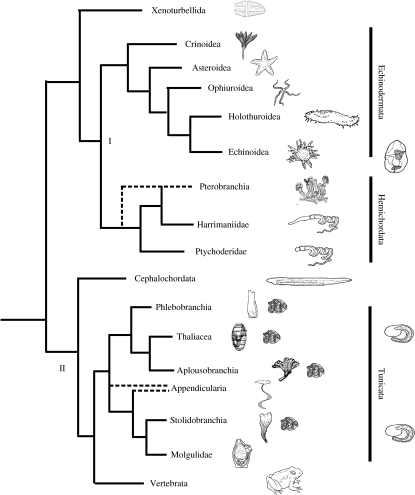Figure 1.
Current deuterostome phylogeny, according to available molecular and morphological data. Dotted lines, clades of uncertainty where conflicting data have been obtained. I and II mark clades where the evidence for a monophyletic group is very high. (I) Ambulacraria is made up of hemichordates and echinoderms. Mitochondrial, ribosomal and genomic evidence are in accord for this grouping. The Ambulacraria develop similarly through gastrulation and share larvae that feed by ciliated bands, strengthening their sister group relationship. Genomic evidence suggests that xenoturbellids may be a sister group to the Ambulacraria, but it is also possible that they are an out-group to the rest of the deuterostomes. (II) Chordates are a monophyletic group that share a specific body plan, but mitochondrial and genomic evidence are in conflict about the position of the tunicates. Mitochondrial and ribosomal evidence place cephalochordates as sister group to the vertebrates, whereas genomic evidence places tunicates as the sister group to the vertebrates. Adapted from Zeng & Swalla (2005).

